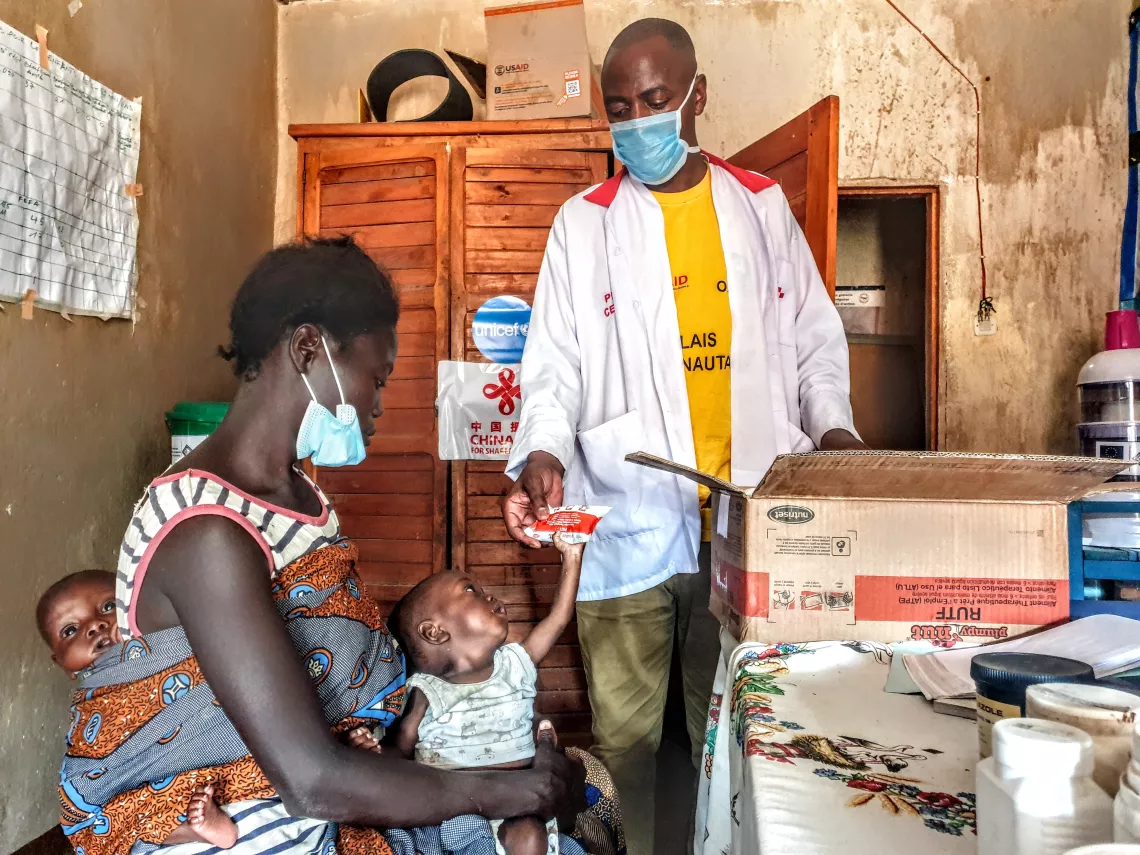Investing in children’s survival and well-being on a healthy planet
World Humanitarian Day

- Available in:
- 中文
- English
In 2022, 274 million people will need humanitarian assistance and protection. Among them, children are the most vulnerable and silent group.1 The climate crisis is a child rights crisis, which is multiplying the threats that children face. It is contributing not only to more frequent and intense climate-related disasters but also to conflict, driving displacement and making life harder for those who have been forced to flee their homes.2 Floods, fires, and extreme weather are causing secondary disasters such as desert locusts and unhealthy water, sanitation and hygiene conditions that are affecting children in the poorest countries. Humanitarian action needs to adapt to these challenging realities. UNICEF initiatives in South Sudan and the Democratic Republic of the Congo (DRC) demonstrate how investment in programmes for children can save lives and mitigate the worst impacts of climate change.
African nations have been battling swarms of desert locusts since 2019. Climatic changes such as increases in temperature and rainfall over desert areas, and the strong winds associated with tropical cyclones, have provided a new environment for pest breeding, development and migration. This suggests that global warming played a role in creating the conditions for the development, outbreak and survival of the locusts.3
In South Sudan, the upsurge in locusts has led to crop and pasture losses, further deteriorating food insecurity and impacting children’s nutrition in Eastern Equatoria State. COVID-19 has further damaged the economy in South Sudan, exacerbating the effect of the locust infestation on the rising rates of malnutrition in the country.
In early 2021, neighbouring DRC also faced an invasion of crop-destroying locusts in Ituri province (eastern DRC), making life harder for thousands of people affected by conflict and insecurity, and resulting in forced displacement. The locusts increased the risk of food insecurity in Ituri, as well as North Kivu and South Kivu provinces. In 2018, UNICEF’s Multi-Indicator Cluster Survey estimated that at least 200,000 children were affected by severe acute malnutrition (SAM) in these three provinces. Since then outbreaks of Ebola and COVID-19 have compounded this precarious situation, magnifying the threat of malnutrition for the region’s children.

With the support of the Chinese government’s South-South Cooperation Assistance Fund (SSCAF), projects to mitigate the nutritional consequences of desert locust in South Sudan and the DRC were implemented from November 2020 to November 2021. UNICEF procured, pre-positioned, and managed the distribution of ready-to-use therapeutic food (RUTF), to help alleviate SAM in both countries. UNICEF provided technical, logistical, financial and supply support to implementing partners. The projects contributed to reducing deaths associated with severe acute malnutrition, and improved access to nutrition services and care in the most vulnerable provinces and areas.
In South Sudan, 14,056 children suffering from severe acute malnutrition (7,309 girls and 6,747 boys) in the affected areas were able to access life-saving commodities and malnutrition management services. In the DRC, 17,915 children (9,475 girls and 8,440 boys) aged 0-59 months affected by SAM benefited from a quality life-saving nutritional assistance in North Kivu, South Kivu and Ituri provinces.
On World Humanitarian Day, we are reflecting on these examples of what can be achieved for children through cooperation, including South-South cooperation. But if children are to be protected from the worst effects of the climate crisis, we need to do more, and do it now. According to the Children’s Climate Risk Index published by UNICEF in 2021, globally, approximately 1 billion children (nearly half of the world’s children) live in extremely high-risk countries. Unless we invest heavily in the adaptation and resilience of social services for these children, and for the 4.2 billion children projected to be born over the next 30 years, children will face increasing risks to their survival and well-being.
1 Global Humanitarian Overview 2022, UNOCHA, https://gho.unocha.org/
2 UNHCR, Key Messages and Calls To Action COP26
3 Meynard, C. N., Lecoq, M., Chapuis, P.-M. & Piou, C. Glob. Change Biol. (in the press)

